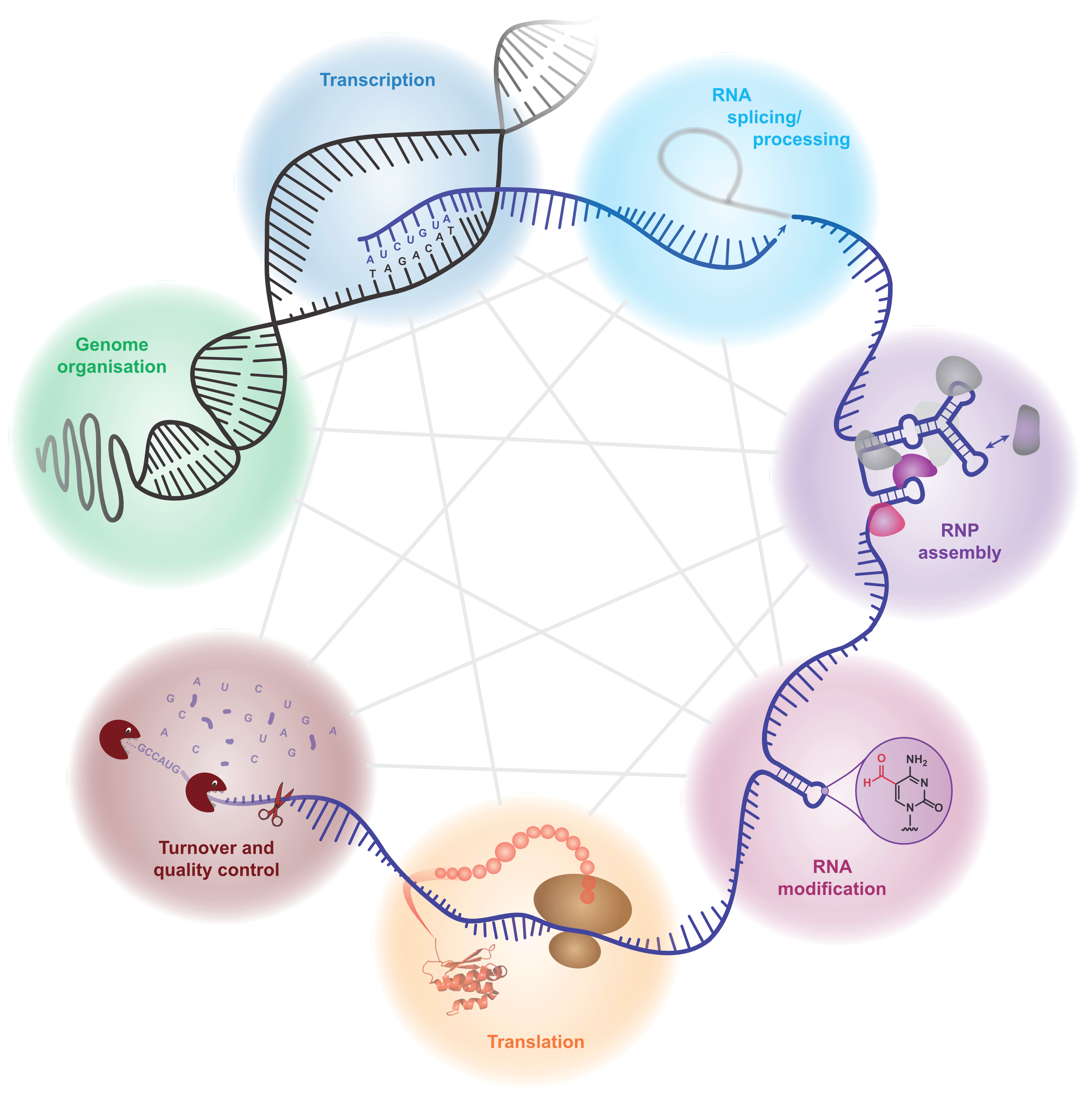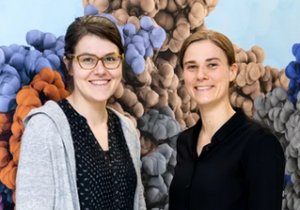Molecular mechanisms and interplay of gene expression processes
Gene expression sculpts the cellular RNA and protein composition, and determines the identity of cells. An emerging concept is that gene expression is not a linear pathway but rather a highly dynamic network of interconnected processes.
Read more
Structure
Organization structure of the SFB1565 Collaborative Research Centre, its team members and their research projects
View Structure ›
Events
Seminars, Conferences and other Events of the SFB1565 Collaborative Research Centre
View Events ›
Publications
All publications of the research team published within the framework of the SFB1565 are listed here
View Publications ›

About SFB1565
While gene expression was traditionally viewed as a linear pathway of consecutive steps, we now know that genome organization and transcription, RNA processing and modification, RNA-protein complex assembly, translation and quality control are highly interconnected processes. Many cross-regulation events occur even between non-consecutive steps of gene expression, and even between processes taking place in different cellular compartments.
This paradigm shift is of central importance for understanding the dynamic regulation of gene expression in various cellular conditions and its dysregulation in diseases.
Key mechanistic and regulatory aspects of gene expression still remain unexplored, and knowledge on the extent and mechanisms of cross-regulation between different processes is still in its infancy.
With this Collaborative Research Centre (SFB1565), we aim to resolve structures and functions of key events in the pathway that have remained enigmatic, but also decipher how different processes are coordinated in space and time, and in different gene expression systems.
Structural views of gene expression machineries and structure-informed functional analyses will pioneer new mechanistic insights and systematic mapping of DNA-/RNA-protein interactions will reveal pivotal interconnections.
Establishing an integrated view of the molecular principles and dynamics of gene expression and the network of cross-regulation will shape our understanding of this important cellular pathway and also of its modulation in different cellular conditions.
Understanding regulatory mechanisms in different gene expression systems will allow principles of regulation and interconnections to be dissected. Tackling these ambitious goals requires the concerted efforts of leading experts in each aspect of gene expression and can therefore only be approached in the context of a Collaborative Research Centre such as SFB1565.
This research initiative holds the promise to provide an unprecedented view of gene expression as a defining network of interconnected cellular processes and thereby also to pave the way for the elucidation of the molecular basis of diseases.
 March 1, 2024
March 1, 2024
High-resolution 3D model of plant RNA polymerase sheds light on photosynthesis
In close collaboration, the team led by Hauke Hillen and Thomas Pfannschmidt has succeeded in creating high-resolution 3D images of the chloroplast copying machine (RNA polymerase PEP) using cryo-electron microscopy. The detailed structure provides new insights into the function and evolution of this cellular machine, which is crucial for the activation of photosynthetic proteins.
Read more:
English Deutsch
 February 8, 2024
February 8, 2024
Mechanistic insights into the ubiquitin labeling system.
Sonja Lorenz and other members of the SFB have succeeded for the first time in visualising the mode of action of a ubiquitin ligase in 3D. The ligase binds ubiquitin molecules to proteins and uses this code to determine whether the proteins are incorporated or degraded, thereby regulating numerous processes in the cell.
Read more:
English Deutsch
 January 30, 2024
January 30, 2024
It is in our genes – and how our genome folds in 3D
The 3D folding of the genome influences which genes are switched on or off. Marieke Oudelaar and Elisa Oberbeckmann have made a decisive methodological advance in understanding how the genome folds. They succeeded in reproducing chromatin from yeast. This made it possible to systematically analyse the folding process and the proteins involved and to decipher the underlying mechanisms. Their work was funded as part of the Collaborative Research Centre “SFB 1565”.
Read more:
English Deutsch


 March 1, 2024
March 1, 2024
 February 8, 2024
February 8, 2024
 January 30, 2024
January 30, 2024